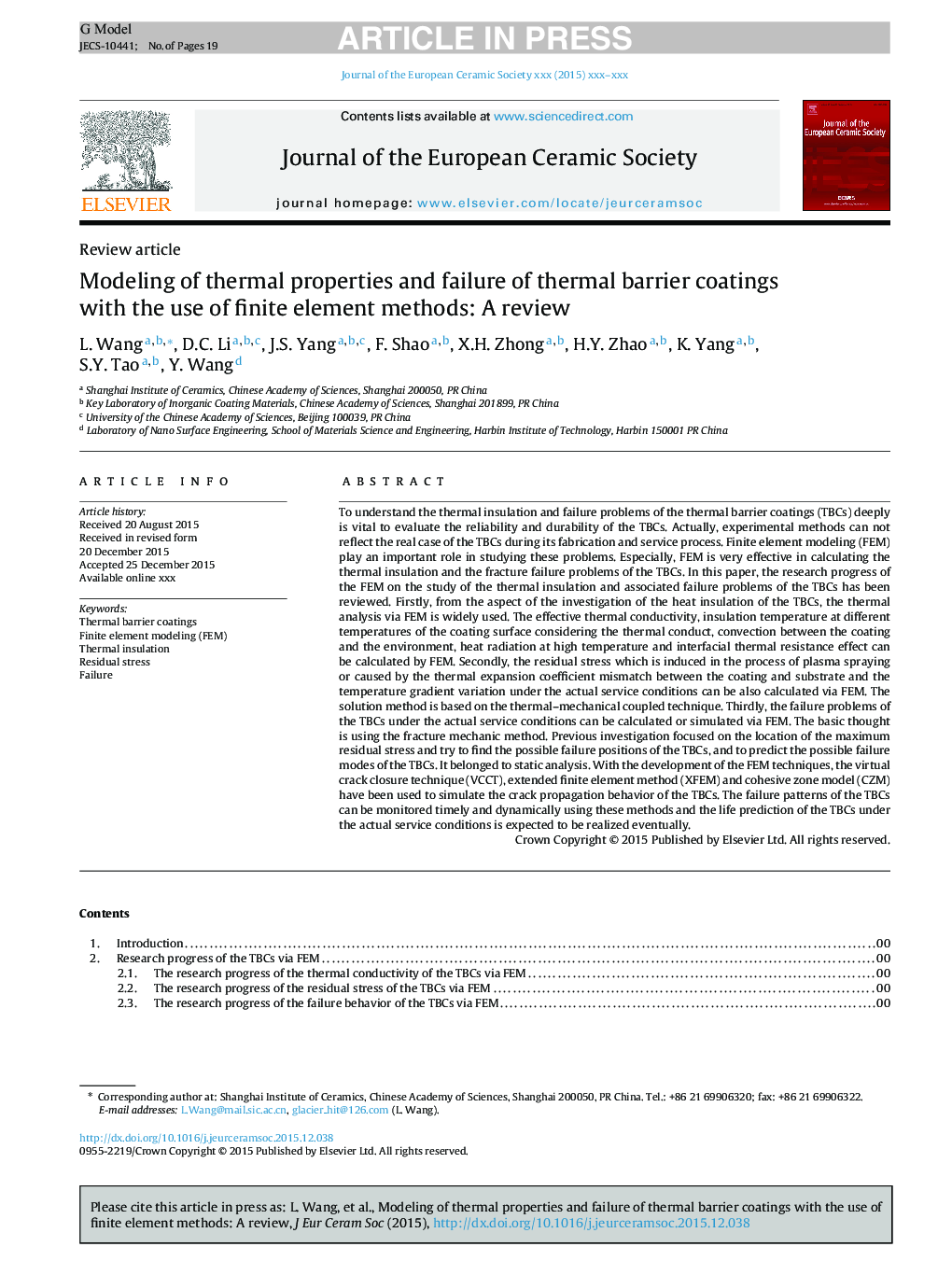| کد مقاله | کد نشریه | سال انتشار | مقاله انگلیسی | نسخه تمام متن |
|---|---|---|---|---|
| 10629309 | 991054 | 2016 | 19 صفحه PDF | دانلود رایگان |
عنوان انگلیسی مقاله ISI
Modeling of thermal properties and failure of thermal barrier coatings with the use of finite element methods: A review
ترجمه فارسی عنوان
مدل سازی خواص حرارتی و شکست پوشش های حرارتی با استفاده از روش های عنصر محدود: بررسی
دانلود مقاله + سفارش ترجمه
دانلود مقاله ISI انگلیسی
رایگان برای ایرانیان
کلمات کلیدی
موضوعات مرتبط
مهندسی و علوم پایه
مهندسی مواد
سرامیک و کامپوزیت
چکیده انگلیسی
To understand the thermal insulation and failure problems of the thermal barrier coatings (TBCs) deeply is vital to evaluate the reliability and durability of the TBCs. Actually, experimental methods can not reflect the real case of the TBCs during its fabrication and service process. Finite element modeling (FEM) play an important role in studying these problems. Especially, FEM is very effective in calculating the thermal insulation and the fracture failure problems of the TBCs. In this paper, the research progress of the FEM on the study of the thermal insulation and associated failure problems of the TBCs has been reviewed. Firstly, from the aspect of the investigation of the heat insulation of the TBCs, the thermal analysis via FEM is widely used. The effective thermal conductivity, insulation temperature at different temperatures of the coating surface considering the thermal conduct, convection between the coating and the environment, heat radiation at high temperature and interfacial thermal resistance effect can be calculated by FEM. Secondly, the residual stress which is induced in the process of plasma spraying or caused by the thermal expansion coefficient mismatch between the coating and substrate and the temperature gradient variation under the actual service conditions can be also calculated via FEM. The solution method is based on the thermal-mechanical coupled technique. Thirdly, the failure problems of the TBCs under the actual service conditions can be calculated or simulated via FEM. The basic thought is using the fracture mechanic method. Previous investigation focused on the location of the maximum residual stress and try to find the possible failure positions of the TBCs, and to predict the possible failure modes of the TBCs. It belonged to static analysis. With the development of the FEM techniques, the virtual crack closure technique (VCCT), extended finite element method (XFEM) and cohesive zone model (CZM) have been used to simulate the crack propagation behavior of the TBCs. The failure patterns of the TBCs can be monitored timely and dynamically using these methods and the life prediction of the TBCs under the actual service conditions is expected to be realized eventually.
ناشر
Database: Elsevier - ScienceDirect (ساینس دایرکت)
Journal: Journal of the European Ceramic Society - Volume 36, Issue 6, May 2016, Pages 1313-1331
Journal: Journal of the European Ceramic Society - Volume 36, Issue 6, May 2016, Pages 1313-1331
نویسندگان
L. Wang, D.C. Li, J.S. Yang, F. Shao, X.H. Zhong, H.Y. Zhao, K. Yang, S.Y. Tao, Y. Wang,
